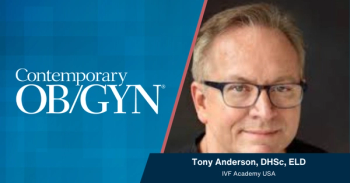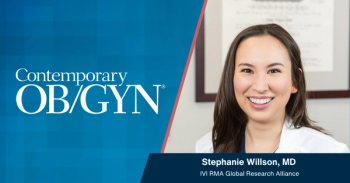
The Role of Gonadotrophins in Follicular Growth
OBGYN.net Conference CoverageAdvances in Infertility, January 2002
Hans van der Slikke, MD, PhD: “It’s January of 2002, and we’re in Fort Lauderdale, Florida at the Advances in Infertility Treatment Conference. Next to me is Professor Zeleznik from Pittsburgh – welcome, Professor Zeleznik.”
Professor A. J. Zeleznik: “Thank you.”
Hans van der Slikke, MD, PhD: “You are very well known with your work on follicular maturation and you’ve agreed to talk with me. You gave a paper yesterday about the role of LH and especially the new developments you found about this role. It’s already well known that we need a FSH threshold and you now think the LH is playing a more important role than we thought, let’s say, a few years ago?”
Professor A. J. Zeleznik: “Correct, this is something actually that we had proposed early in 1984, Steve Hillier and I wrote a review article for Clinical Endocrinology. We actually proposed at that time that the LH responsiveness of a follicle might make a difference, and it’s been now seventeen years until we have been able to get the gonadotrophins to be able to do these studies. That was actually done by Mike Sullivan who was a fellow in our laboratory and it’s really very simple. It’s as you said, there’s a threshold of FSH that needs to be achieved to initiate follicular growth so that, for example, during the luteal phase when there’s no follicular growth FSH levels are below threshold and at the beginning of a new cycle the corpus luteus regresses and FSH levels rise above that threshold. As long as FSH levels are above that threshold, follicles will readily grow which really is the key to spur ovulation using hMG or clomiphene or whatever. During the normal cycle only one follicle grows and the reason for that is the estrogen and the inhibitant produced by that maturing follicle then feeds back and suppresses FSH levels below thresholds so no other follicles are then able to grow. So the perplexing question there is that we all know that FSH is totally required for follicular growth and we can believe the threshold hypothesis but the question is why doesn’t the mature follicle die as a result of it’s own suppression in FSH, and that is then the enigma and there are probably many different reasons. We’ve heard about angiogenesis which probably plays a role but all of these things that may play a role, for example, angiogenesis are all gonadotrophin regulated so we still have to come back to the initial question is that gonadotrophin that’s driving all these other things. So this is where it becomes interesting because in 1974 my PhD thesis, my very first paper, demonstrated that one of the major effects of FSH on the follicle was to induce LH receptors and give LH responsiveness. It was later shown that both FSH and LH worked by the same signaling pathway so when the follicle is getting LH receptors it’s also now gaining the capacity to respond to LH. The beauty of this is that it gains LH receptors when it gains aromatase, so as the follicles producing estrogen which is suppressing FSH, it is getting LH receptors which is now allowing it to respond to LH and not be hurt by the fall of FSH that it imposes on other follicles that don’t have LH receptors so it’s just a nice little story. Certainly clinical implications of that is obviously one of the major problems in working with gonadotrophins is the possibility of always having hyperstimulation syndrome and having that system get out of control. This FSH to LH switch essentially is shutting doors and opening new doors that other follicles can’t pass through so it no longer becomes a random coin flip in terms of how many follicles you’re going to get. Obviously there’s much more work that needs to done to document this but in theory simply by shutting down FSH and giving LH one could potentially block follicles from growing and maintain a certain select number of follicles. So someday it may be possible to say how many follicles do you want - do you want two? We’ll wait until there are two follicles that are LH responsive, if we knew what size that was, and shut the FSH off and give LH - we can have two. Do you want four? Let’s wait until there are four follicles that are LH responsive and then give the LH so the key to that is identify what size follicle becomes LH responsive and that has to be done through more clinical research. We don’t know, it’s probably somewhere around 10 mm. Is it 9.5, 9.75, or 10.25 - we don’t know that.”
Hans van der Slikke, MD, PhD: “We even don’t know if it’s dependent on the size of the follicles.”
Professor A. J. Zeleznik: “Exactly, and from one woman to another so exactly. I have a very easy job because I’m a scientist and I can understand principles. The difficult job is really going to be up the clinicians now to take advantage of that system to decide if they want to use it; I think it’s important. I think Marco Filicori, if you’ve spoken with him, has done a very good job at taking this principle now and expanding it.”
Hans van der Slikke, MD, PhD: “And try to use in clinical practice.”
Professor A. J. Zeleznik: “Yes, try to use in clinical practice and I think his results are very, very promising. I think they’re exactly as what we have predicted from our study so I think it’s a real phenomenon, and if it is I think it’s an example of how we can use physiology. But you have to know physiology first before you can plan good clinical protocols.”
Hans van der Slikke, MD, PhD: “Because as usual at first it seems very simple so the way we now do ovulation induction is, let’s say, a very straight way but again what’s being played is very much subtile and…”
Professor A. J. Zeleznik: “Kind of the way we do ovulation induction is like hitting a thumbtack with a sledge hammer. You just blast everything and hope for the best, not really but I think what’s happening now as you hear from the theme of this meeting is that it’s time to rethink the overall strategy for ovulation induction. I mean - do you need twenty follicles that mature, how many of those eggs are really going to be good, or in fact do you do a more controlled subtle ovulation that reflects more the physiology of the system? I think the things that we’ve been doing not just last year but really over the twenty years with our model systems is understanding that physiology. It’s nice to come here to a meeting and see that it pays off and it probably does work.”
Hans van der Slikke, MD, PhD: “And now at last after twenty-seven years after your thesis things are going to happen and get implication.”
Professor A. J. Zeleznik: “The interesting thing is that we still don’t know how FSH and LH work on these cells and so that’s the next frontier because once we understand the signaling pathways that FSH and LH uses then the possibility is actually having different types of fertility drugs that are not gonadotrophins that will specifically regulate those practices. So there’s still something to do when we go back to work. Some of this we can talk about when I come back to the next meeting and eat all your good food.”
Hans van der Slikke, MD, PhD: “Thank you very much.”
Professor A. J. Zeleznik: “Nice speaking with you.”
Hans van der Slikke, MD, PhD: “Thank you. It was nice speaking with you.”
Newsletter
Get the latest clinical updates, case studies, and expert commentary in obstetric and gynecologic care. Sign up now to stay informed.










